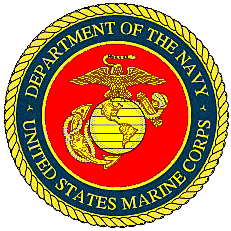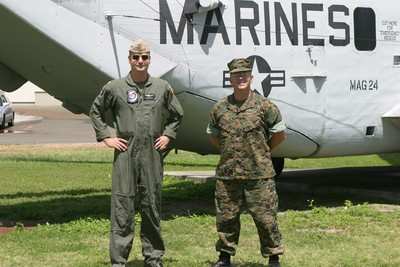 The month of April begins with
mischief, innocent white lies and laughter; however, when two
service members stationed aboard Marine Corps Base Hawaii, Kaneohe
Bay, returned home aboard Korean Airlines Flight 7865, no comedy
was involved.
The month of April begins with
mischief, innocent white lies and laughter; however, when two
service members stationed aboard Marine Corps Base Hawaii, Kaneohe
Bay, returned home aboard Korean Airlines Flight 7865, no comedy
was involved.
Roughly three hours into their eight-hour return trip to Hawaii,
a 57-year-old man began to show signs of uneasy breathing. After
the man notified a flight attendant of his difficulty breathing,
she responded by administering him with oxygen.
A concerned observer, who took the initiative to make the flight
attendant aware of his medical expertise in case of need, occupied
the seat directly behind the struggling man. Yet, the flight
attendant responded to the worried passenger that the situation was
under control. The concerned observer and his fellow corpsman
seated next to him relaxed, but kept a watchful eye on the aircraft
personnel attending the ailing man.
After nearly 15 minutes had passed without improvement, the
flight attendant then asked the two concerned passengers for
assistance. The two men identified themselves as Navy Lt. David M.
Stevens, a flight surgeon with Marine Aircraft Group 24, and Petty
Officer 1st Class John F. McGaha, a corpsman also with MAG-24,
returning to K-Bay from deployment in support of Operation Foal
Eagle in the Republic of Korea.
After gaining approval from both the man and his wife to assist
the ill passenger in his struggle, Stevens quickly determined the
man was suffering from acute respiratory distress, due to a severe
asthma attack. His wife confirmed that he had a history of
asthma.
At that point, the ill passenger began unsuccessfully gasping
for air.
McGaha took action by retrieving the aircraft's medical kit and
locating the materials needed to save the man, as Steven's
researched the ailment in a critical care medical book he always
carries with him. After the desperate search through the aircraft's
inventory, the two medical Sailors realized that the medications
needed could only be administered through an intravenous (IV)
line.

Their concerns intensified, however, when they realized they
were only equipped with one IV. McGaha successfully administered
the IV on the one and only shot he was able to take, and the
medications began working magic.
"It took about five minutes before he responded to the
medications," said McGaha, who explained that he and Stevens
continued to administer medication while also keeping a close eye
on the patient, throughout the flight.
"McGaha carefully watched the man and took his vitals all night
long," said Stevens, adding that many odd coincidences helped save
the passenger. Before the flight began, Stevens had read a chapter
in his critical care medical book to pass the time. That chapter he
had been reading just happened to be about asthma.
Also, Stevens' and McGaha's seat placements directly behind the
victim proved beneficial, especially since at the time of his
attack, most of the other passengers were asleep. No one else
roused and tried to aid the surgeon and corpsman throughout the
duration of the rescue attempts, he explained.
"If we had not assisted the man, he would have died," said
McGaha.
Stevens asked the pilot to alter the course in case an emergency
landing was required. Fortunately, that safety measure was not
needed. As an added precaution, however, the pilot flew the rest of
the way back at a lower altitude. The adjustment lessened the
cabin's air pressure, which increased available oxygen in the
aircraft.
After five hours, the plane landed in Honolulu with all
passengers healthy and safe.
Stevens and McGaha contacted the airline a couple weeks after
their flight, and were informed that the former passenger was in
good condition and very appreciative of their help.
"It was an amazing opportunity to help out," the men agreed.
"We're just happy we could be there to assist with his recovery."
[ANN Thanks Lance Cpl. Megan L. Stiner for the story...]
 Airbus Racer Helicopter Demonstrator First Flight Part of Clean Sky 2 Initiative
Airbus Racer Helicopter Demonstrator First Flight Part of Clean Sky 2 Initiative Diamond's Electric DA40 Finds Fans at Dübendorf
Diamond's Electric DA40 Finds Fans at Dübendorf ANN's Daily Aero-Term (04.23.24): Line Up And Wait (LUAW)
ANN's Daily Aero-Term (04.23.24): Line Up And Wait (LUAW) NTSB Final Report: Extra Flugzeugbau GMBH EA300/L
NTSB Final Report: Extra Flugzeugbau GMBH EA300/L Classic Aero-TV: 'Never Give Up' - Advice From Two of FedEx's Female Captains
Classic Aero-TV: 'Never Give Up' - Advice From Two of FedEx's Female Captains




